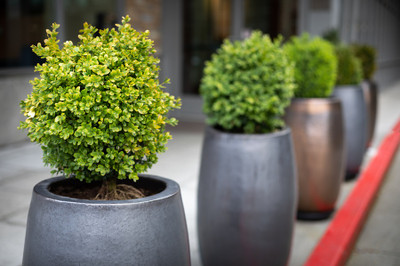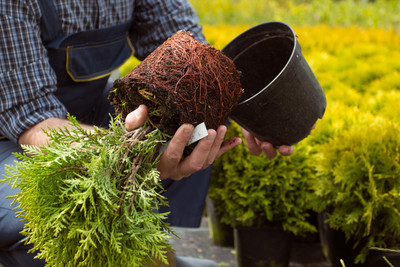Landscaping with Planters: Ideas, Tips, and More
Posted by Jason Wyrwicz on Jun 13th 2024
When you’re landscaping with planters, it opens up a whole new range of possibilities. People often don’t realize just how much diversity there is in the planter industry. And, even beyond that, planters give you the opportunity to create movable landscape elements and incorporate contrast to good effect.
The Benefits of Landscaping with Planters
When you use planters in landscaping, there are a range of unexpected benefits. Some of these include the following:
- Movable visual elements - Unlike in-ground hedges, shrubberies, and other similar landscaping features, planters are 100% movable. They can be heavy, though, so try to position them before filling them.
- Versatility - When you use planters in a landscaping project, they give you so much versatility. From bringing vibrancy to a patio or deck to subdividing your garden areas or beautifying a garden path, planters are brilliant.
- Aesthetics - Planters can be truly beautiful. If you choose the right size, shape, and color planter, it can have an almost devastating effect.
- Diversity - When you use planters in landscaping, there are so many different options. From round to square, cylindrical to fluted, short to tall, and black to pink or yellow, the options are nearly limitless.
- Open new areas - Planters eliminate the need for in-ground garden spaces. Even if you have a fully paved area or one where the soil is too hard and compacted to plant in, you can still landscape it by using planters.
These are just a few of the reasons why using planters in landscaping is such a worthwhile idea. Planters can be a brilliant tool in your landscaping arsenal if you use them right.
Ideas for Landscaping with Planters
People often like the concept of container gardening or another form of landscaping with pots and planters but may be unsure where to begin. We’re about to share some of the best ideas that can help inspire you as you start landscaping with planters.
Brighten Up Pathways, Walkways, and Trails
A pathway is often the first thing people see when they approach your home or office. Planters in your landscaping can easily adorn your trails and walkways with a range of different plants.
Depending on the kind of aesthetics and feel you’re going for, there are many ways to incorporate these planters. You can opt for the grace and beauty of flowering plants, the beautiful foliage of evergreen trees, or the colorful foliage of certain other ornamentals.
Whatever you decide to plant in the planters, this is a wonderful, unobtrusive way of delineating pathways that lead to different places.
Types of Planters for Walkways
When you’re using planters for landscaping your walkways, there are a few options. First, there’s no real limitation on shape. You can choose between many different shapes and still create an excellent image.
However, when it comes to size and height, there are a few things to consider.
First, you don’t want to choose really short planters. These may be easy to overlook and won’t create the “guided walkway effect.” Opt for medium to tall planters instead.
Second, extra-large rectangular planters aren’t ideal here. They can create a somewhat “caged” effect rather than merely offering unobtrusive guideposts.
Plant Ideas
When using planters for landscaping walkways, you want to choose plants that stand out.
Evergreens like cypress are popular choices with or without planters. They create the perfect guidepost effect throughout the year.
If you like the idea of using trees, a medium-height planter combined with dwarf fruit trees would also work well. Dwarf apple and dwarf cherry trees have beautiful foliage and will produce beautiful flowers at other times of year, especially in cooler climates. This is why cherry trees are such popular landscaping elements on roadsides in certain areas.
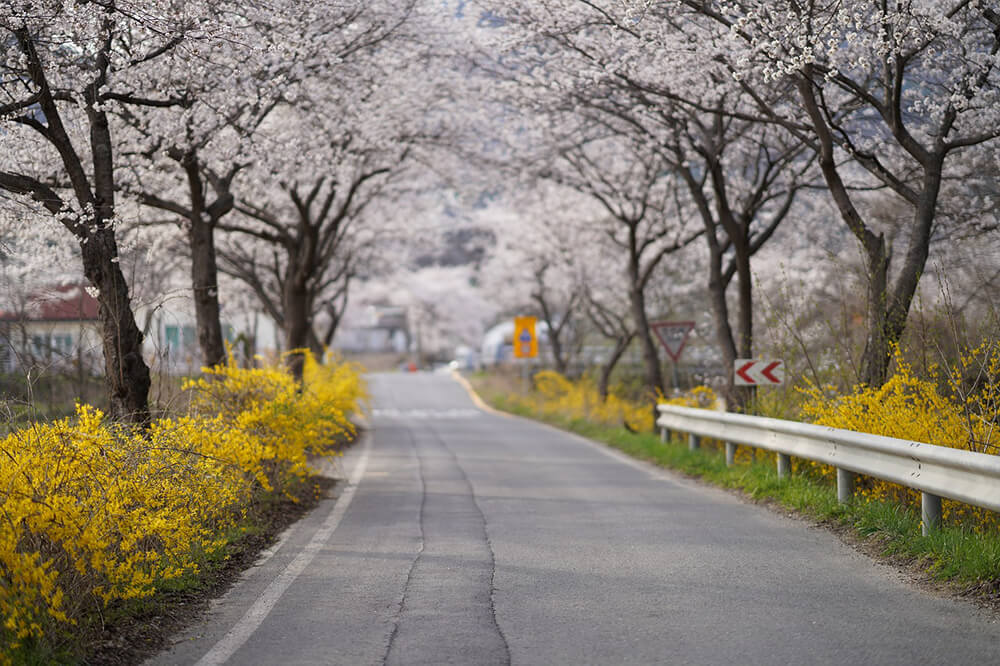
Use Planters to Create Depth, Contrast, and Privacy
When you use planters in landscaping, it also gives you a lot of control over the image you create. They can help you separate large areas into smaller ones, for instance.
For example, by using tall planters and tall plants, you can easily create privacy in certain areas. Here’s one example:
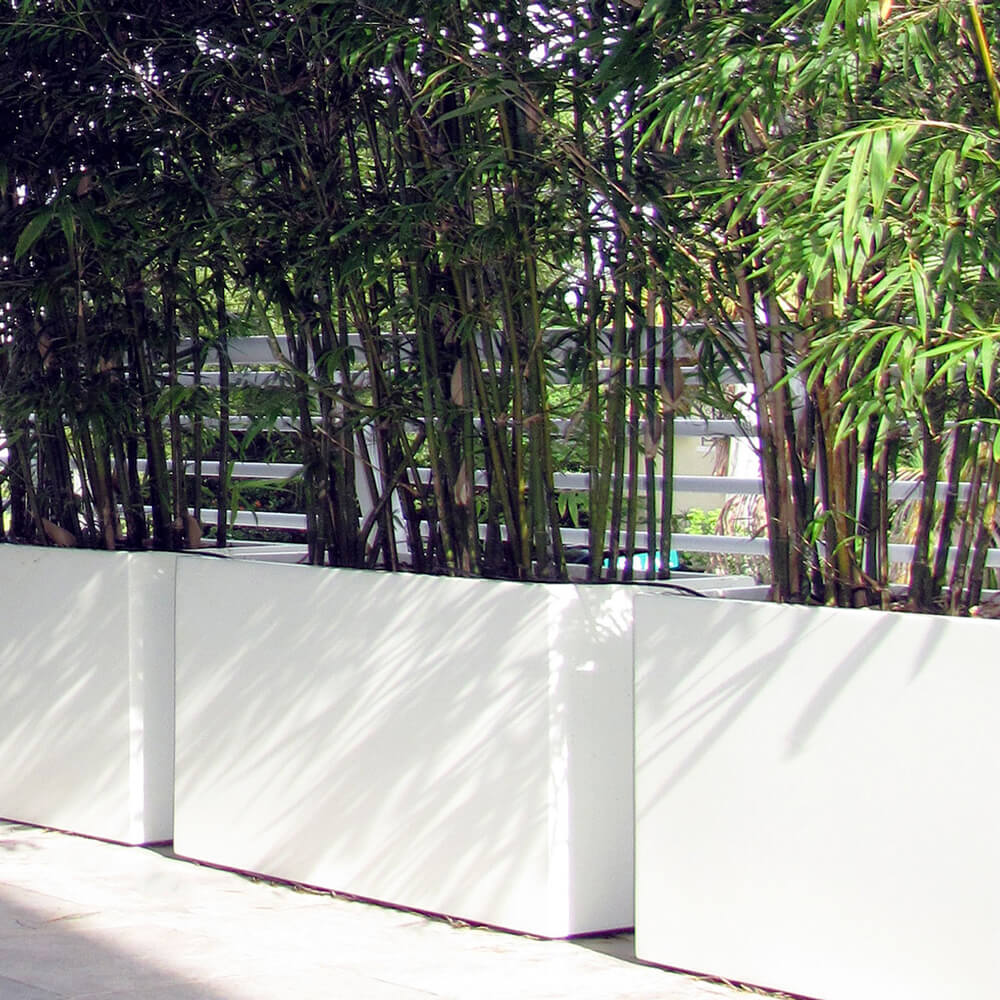
You can also use planters to great effect when trying to demonstrate that one area is distinct from another. In this example, you can see that the planters and the plants are both short but still do an excellent job of turning this sitting area into a distinct zone.
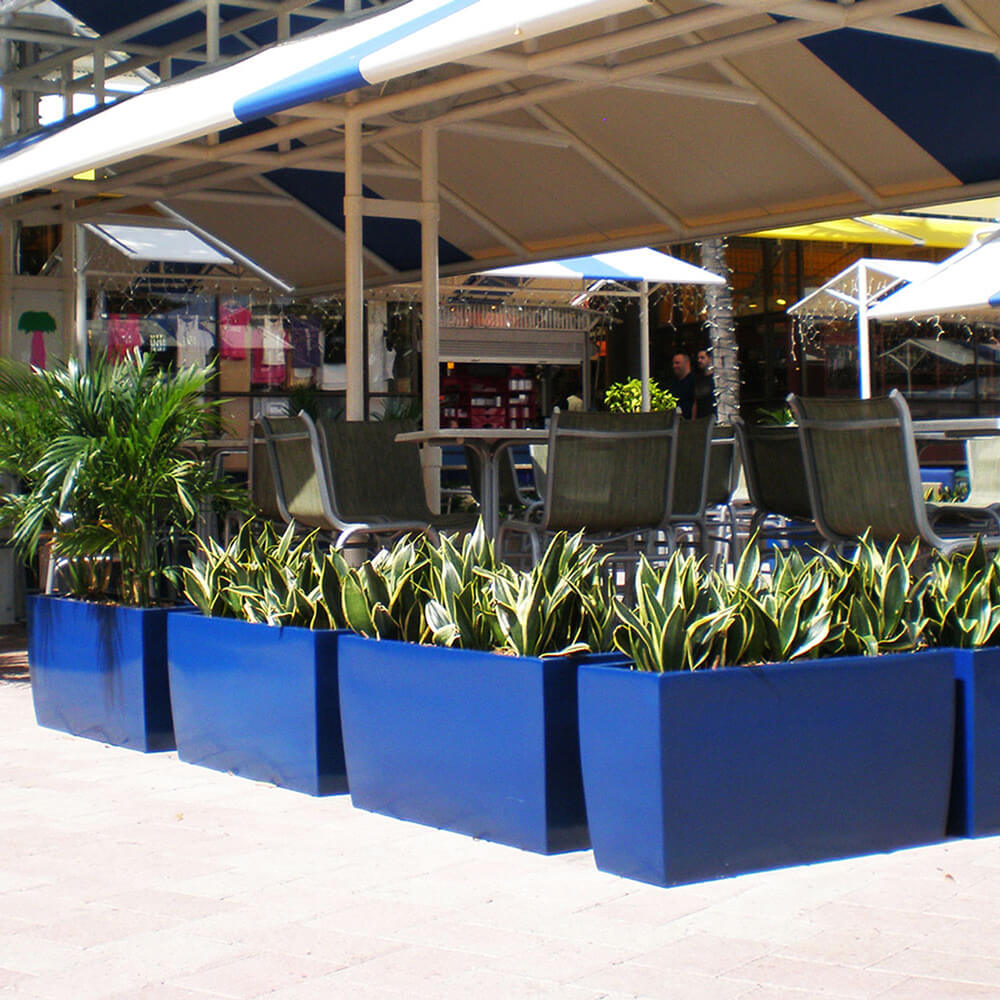
Types of Planters for Creating Privacy and Contrast
When it comes to using planters in landscaping to delineate areas or create privacy, most people tend to stick to one of a few types of planters.
For instance, in the example above, you could use large, rectangular planters like the Badalona Planter Box or the Panama Tapered Planter Box. There’s a reason these types of planters are popular for this purpose: they work well.
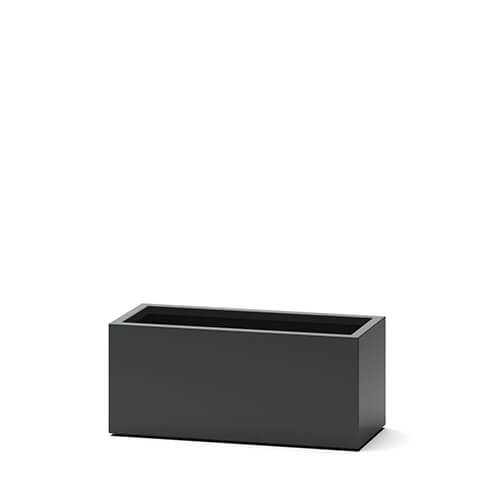
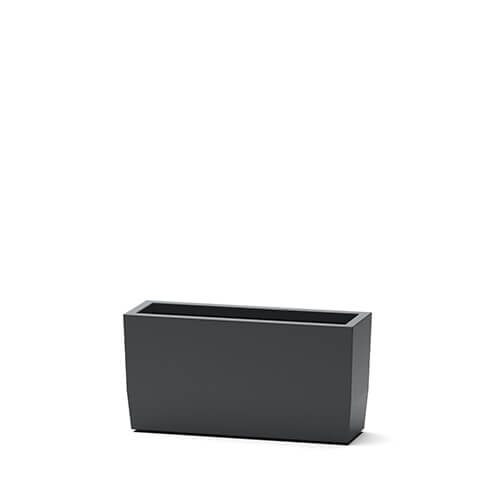
However, that’s not to say that you can’t achieve the same thing equally well with different planters. You can use tall planters or short planters with tall plants reasonably well to create privacy or separate zones.
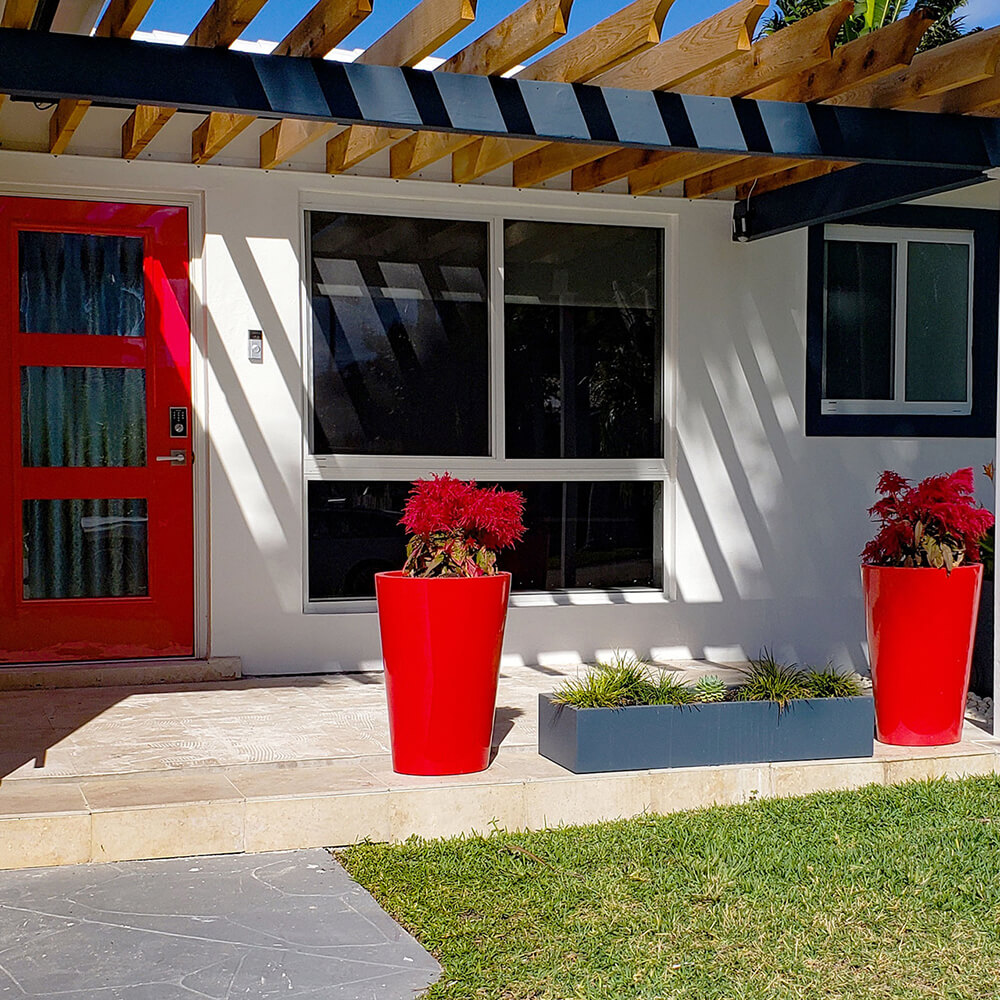
Here, the Pego Oval Tall Planter has been used to help effectively divide a porch from the rest of the garden. In the end, it comes down to using contrast and choosing the right size and shape for your intended purpose.
Plant Ideas for this Purpose
When using plants and planters in landscaping to distinguish one area from another, there are a few plants you can rely on to get the job done.
One such option is bamboo. Its brilliant coloration, dense rapid growth, and height are incredibly effective when it comes to creating privacy. There are also many kinds to choose from, ranging from the tiny lucky bamboo to giants like the black and golden varieties.
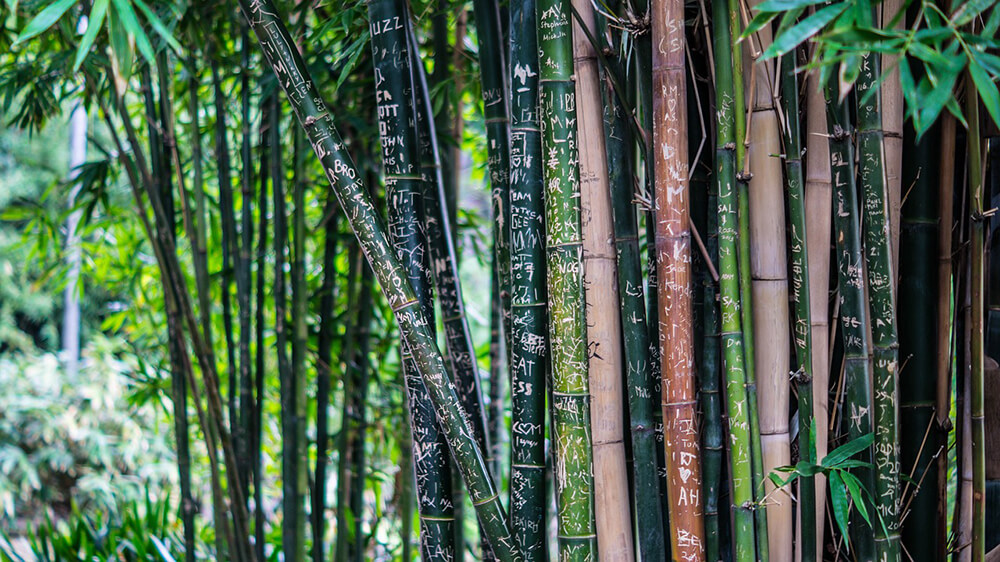
Boxwood is another fairly popular plant for this type of landscaping attempt.
It’s an evergreen that creates incredibly dense foliage and is really easy to shape into topiaries. It grows exceptionally well in containers, and growing boxwood in planters gives you a lot of creative freedom.

Another excellent way to practice this kind of landscaping with planters is to plant a tall plant in the back or center of a wide planter with smaller, more colorful plants in front. One excellent option for this is the Coleus, which produces masses of vibrantly colored foliage.

Use Plants and Planters to Create a Backdrop or Focal Points
In some cases, there’s something slightly depressing about seeing bare walls and fences in your yard or commercial space. Parking lots, too, can seem very dull and lifeless.
Fortunately, when you’re landscaping with planters, you can easily rectify the situation. In next to no time, you can turn a drab, dreary yard or parking lot into something lush and lively.
One way to do this is by incorporating planters around the perimeter of the area.
Here’s a brilliant example of planters used to great effect around an area’s perimeter.
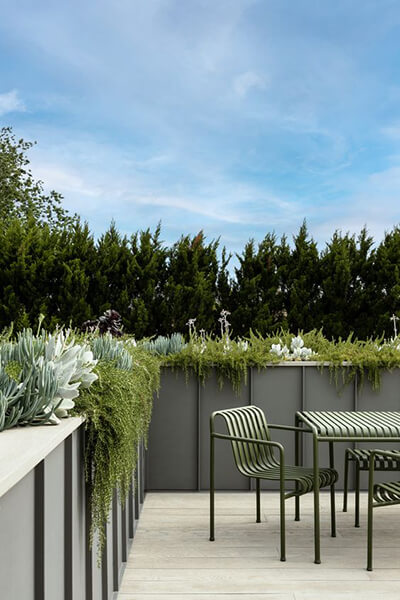
PC: Belle Magazine on Pinterest
Notice how the planters help to give the area a perimeter, but the trailing plants help to break the stark, harsh boundary effect.
Another way is to strategically place planters throughout the area you’re trying to spruce up (no pun intended). You’ll quickly see that what was once a dreary area can become a source of joy and pleasure.
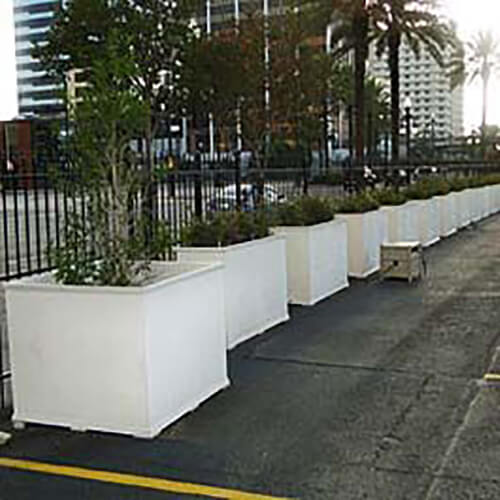
PC: Flower Window Boxes on Pinterest
One additional option for perimeter planting is to use planters alongside trellises to create more height and growing area.

PC: The Garden Trellis Co. on Pinterest
Types of Planters for Giving Life to Perimeters and Lifeless Areas
When you’re trying to beautify a perimeter, you don’t necessarily need to take up a lot of width. Height is often a more relevant factor for this application.
One excellent way to make up that height is to use something like the Camoux Narrow Contemporary Planter Box. It has plenty of length and height (allowing for plants with deep roots), but it doesn’t take up the space that a wider planter would. This attribute makes it ideal for smaller spaces that need some rejuvenation.
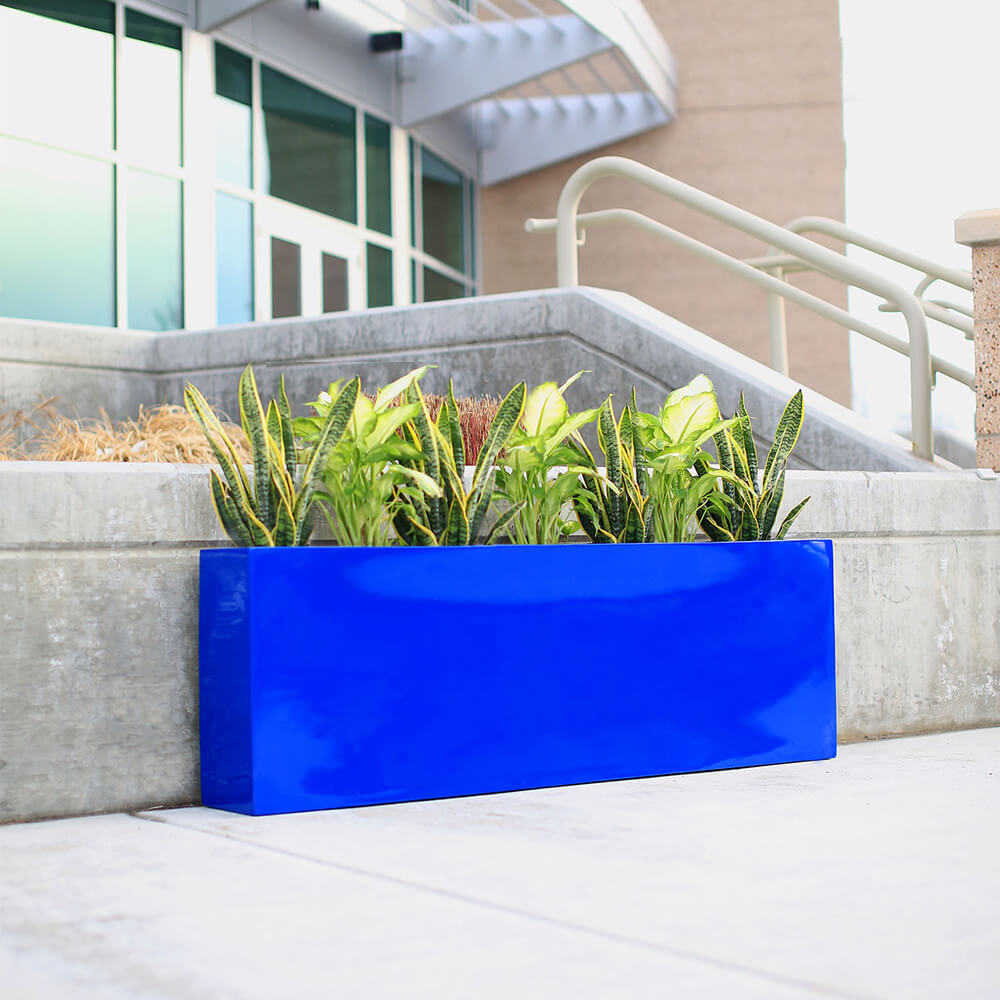
Of course, if you have the space, you can also go for something larger. Whether you want something reasonably short, like Low Profile Planter Boxes or something that will give you more height distinction, like these Large Rectangular Planter Boxes, there’s plenty of room for experimentation here.
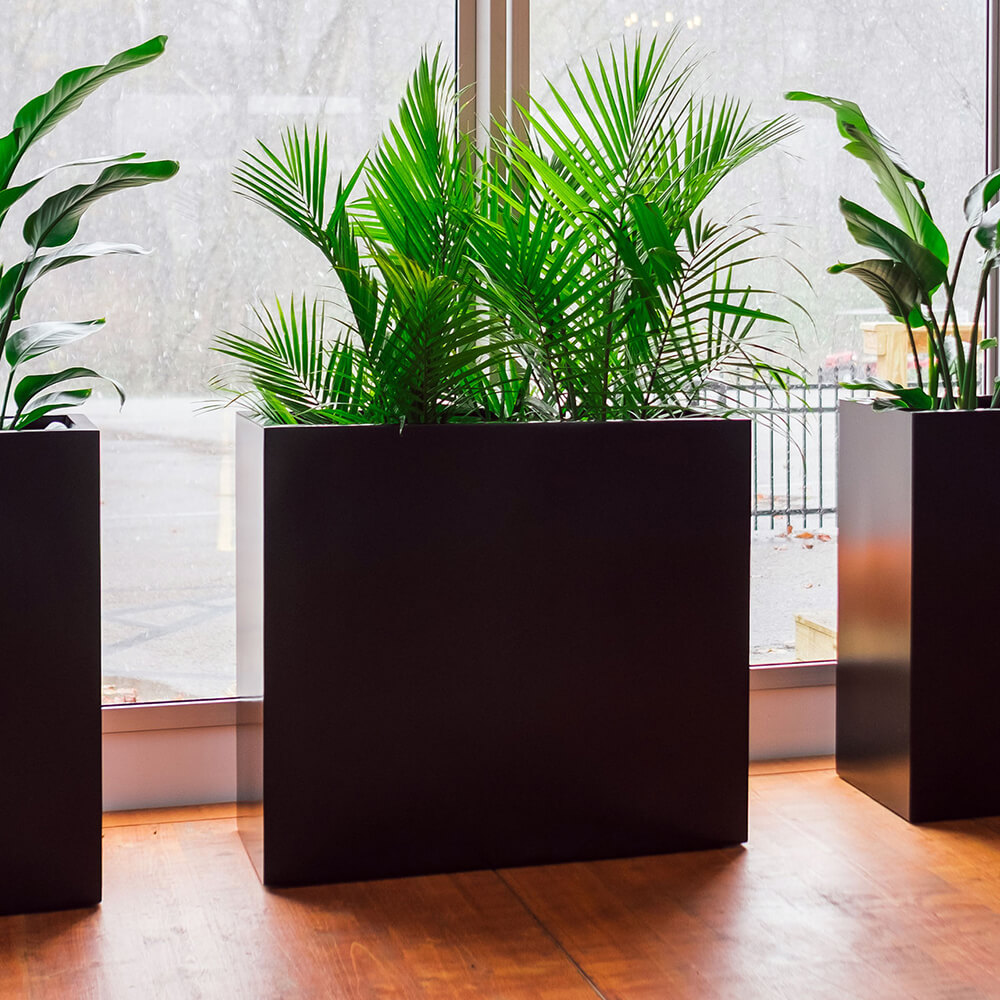
Of course, if you’d like to place scattered planters throughout an area, you’re basically unlimited. From round planters like the Wannsee Large Tree Planter to custom planters, your options are nearly limitless.

Plant Ideas for this Purpose
As with the planter selection for this type of landscaping with planter-based design, again, the plant options are nearly limitless here. However, when you’re trying to make a perimeter stand out, there are a few different plant types that are especially useful.
Apart from the plants already listed earlier, many of which would work well, some of the other options that would work well include small palm trees like the Chinese fan palm or pygmy date palm.
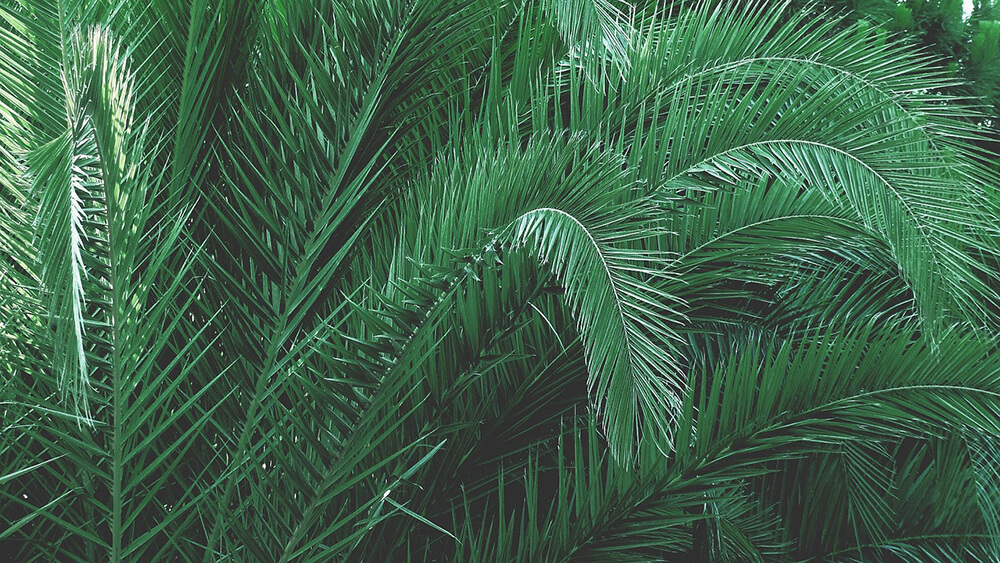
Another option for filling in space between taller plants is the spider plant. This prolific plant creates beautiful trailing foliage in the warmer seasons, which you can remove and turn into more spider plants.

Additional Tips
There are many different things you can practice when using planters in a landscaping setup. The ideas listed above are just a very few of the different options. Below, you’ll find a list of tips that can help you make your landscaping project even better.
Use Both Foliage and Flowers
Many fledgling garden or exterior designers fall into one of two traps. Either they use only flowers in their landscaping, or they use only foliage. Both of these mistakes can be fatal to your overall design.
It’s best to try and incorporate both elements to create a balanced yet striking design. For instance, the dark green foliage of boxwood will contrast quite well with the autumn hues of Boston Ivy. If you combine these with something like Grape hyacinth, you’ll create a breathtaking design.
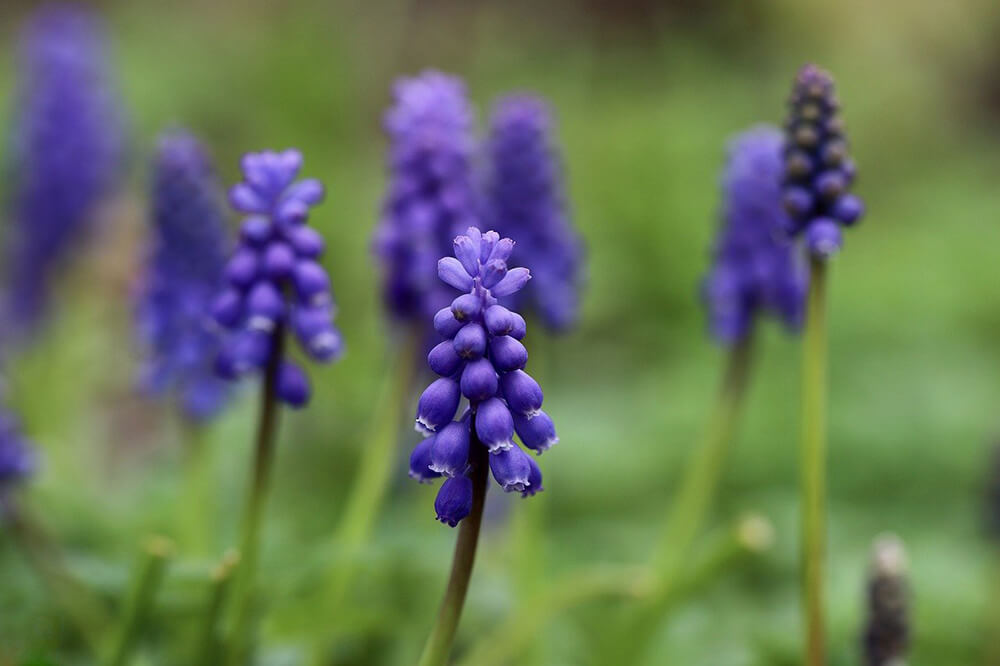
Planters Aren’t Just for Plants
Many people think that you can only use planters for terrestrial plants. However, you can just as easily use these for aquatic landscaping or to house ornamental fish. Some landscapers may even take large planters and turn them into decorative fountains that house an aquascape.

Experiment with Different Heights and Colors
When landscaping with planters, it’s easy to get so wrapped up in uniformity that you lose the potential beauty of contrast. With so many colors and sizes of planters to choose from, you can create absolutely breathtaking spectacles by contrasting tall and short planters. You can also play around with contrasting and complementary colors.
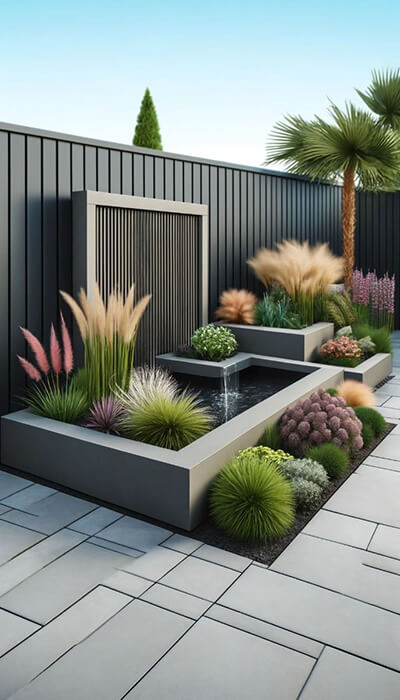
PC: Decor Dreams Hub on Pinterest
Using Planters Around Entrances
One of the most striking ways to use a planter in landscaping is to frame an entrance. Not only does it make the building look more hospitable, but it also elevates the entranceway's overall aesthetic.
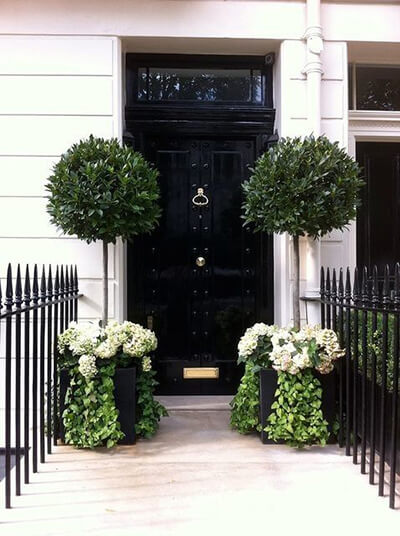
Final Thoughts
Using a planter, pot, or container in your landscaping project is an excellent idea. Not only does it give you wonderful flexibility and versatility, but it can also elevate the appearance of an area.
This article covered just a few of the many potential projects that you can try in this manner. From round planters to square ones, tall planters to short ones, narrow, wide, and everything in between, there’s an option that’s sure to fit your space.
Do you want to transform your garden or courtyard, but you’re unsure which planters to use? Feel free to
contact us. We’d love to help you make your landscaping dreams a reality.


